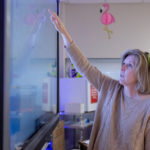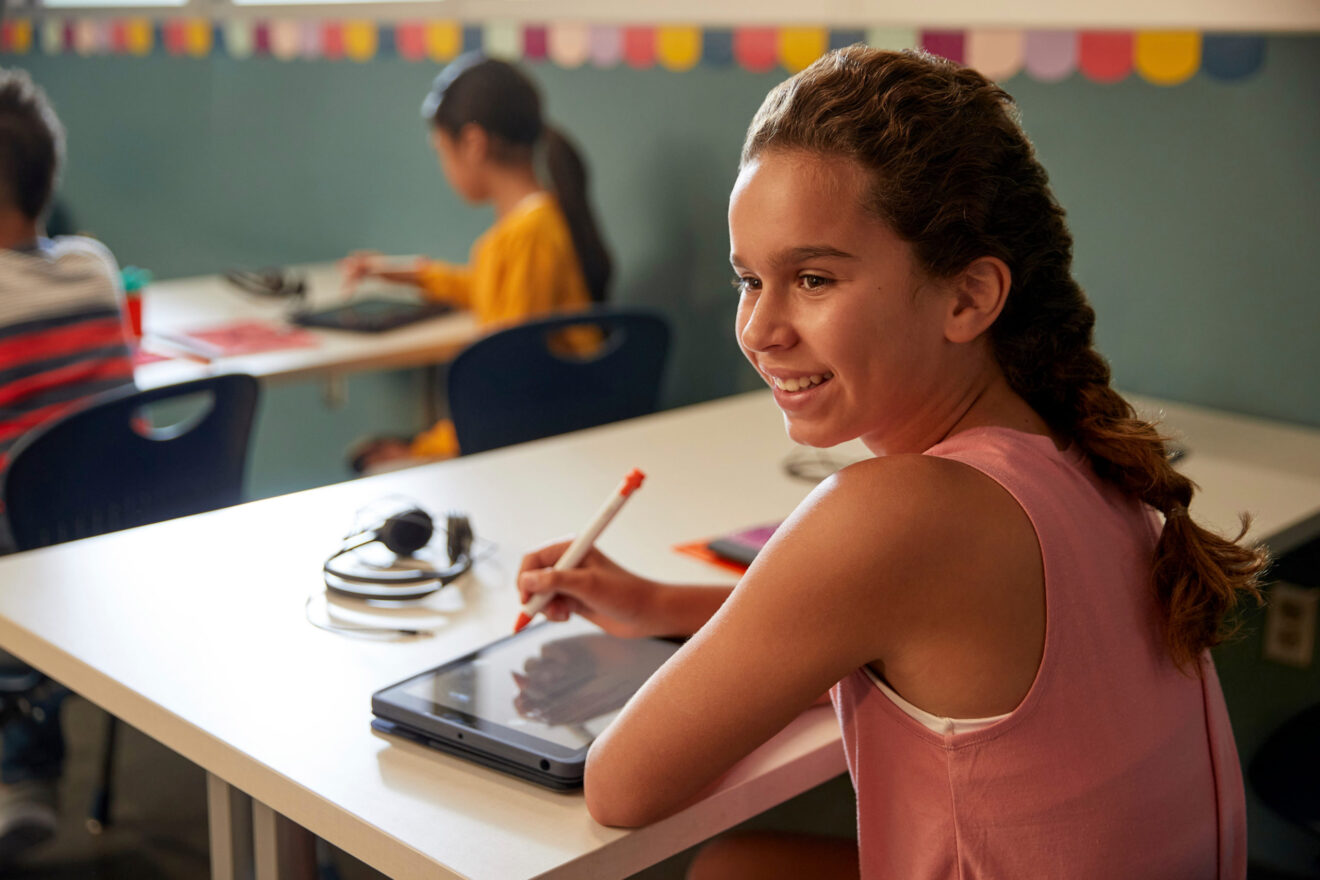When classrooms reach the full promise of instructional technology there’s a unique moment. An epiphany. A student might express themself in a way they couldn’t before. A teacher discovers an innovative way of introducing content. A classroom collaborates in ways that make everyone feel more connected. In all instances, the realization is the same: Using technology creatively sparks new moments of creative learning.

I’ve seen this firsthand. As an instructional technologist at Deer Path Middle School, I have seen my colleagues harness the full power of technology and I’ve watched their students’ creativity — and student voice! — soar.
Reaching those moments wasn’t easy. We have been transforming our technology use for over ten years. We began like many others, substituting traditional materials for digital ones, then iterating with tools and strategies so technology feels like a booster instead of a barrier. Along the way, we’ve adopted iPads for every student and evolved instructional approaches. We continue to learn. Here are four best practices we have gleaned from our experience.
Nurture creative self-expression
Like many schools, no two students are alike at Deer Path. Choice is essential. We are committed to creating learning environments that meet students where they are, challenge them to grow and provide them with multiple means of expression.
We can do this with technology. We use tools that help us better gauge understanding in the moment, measure competency and skills –- across student learning styles -– and foster student choice and agency at all levels.
One of the tools we use is the Logitech Crayon. We paired this stylus with iPads in our math classes, giving students a new way to show their understanding of concepts. Students now can easily and clearly show their work instead of only relying on a keyboard or using their figures to diagram a problem. The screen recording feature lets students capture themselves as they talk through the steps of a problem and show their work with their stylus. When a student gets stuck, these inputs help them get better feedback and interventions from their teachers.
Inspire new ways to engage with content
Self-expression goes hand in hand with engagement. To stay engaged, kids need ways to express themselves and move around. Researchers have shown again and again the power of this kind of kinesthetic learning. Here, technology can unlock new ways to engage with content while also encouraging movement and creativity.
In our school, movement is part of our biome unit. Teachers post QR codes that link to different biomes in the hallway outside the science classrooms. Students use their iPads to scan the QR codes, which are linked to resources about the ecosystem. Some of the coolest resources are 360-degree videos hosted on YouTube. The videos let students experience different environments by moving their devices. The whole time kids are moving and deepening their engagement with the content.
Cultivate connections in and out of the classroom
The last way technology unlocks creativity is through connection. I’ve seen technology unite children and educators through improved feedback loops, collaborative learning and in-the-moment interactions. When our school shifted to hybrid learning, where some students are fully remote and others are in the classroom, we paired students in different locations and used technology to help them collaborate.
Students are using technology to make connections outside of classrooms too. During a nonfiction unit in our English language arts class, students used iPads as storytelling tools to bring history home. Some wrote poems or created slideshows. Many chose to record their family’s immigration stories through interviews with their parents and grandparents. The results were powerful. Students captured emotional stories that deepened their family connections as well as their understanding of the immigrant experience.
Focus on student choice and creativity
These key moments of creative technology use grew out of the same place: a steadfast focus on student choice and creativity. Our commitment to these elements has helped us realize the full promise of technology and continue to spark moments of creative learning.
Colene Hardy is the instructional technology specialist at Deer Path Middle School.
________________________________
If you liked this article, sign up for SmartBrief’s free email newsletter on EdTech. It’s among SmartBrief’s more than 250 industry-focused newsletters.
More from SmartBrief Education:
- 5 ways new school-home communication meets family, staff needs
- 5 virtual-classroom tools to foster authentic connections
- Changing the classroom experience with instructional audio
- Powerful social media solutions for students
- How comics curriculum boosts SEL
- 8 ways to make vocabulary instruction more effective
